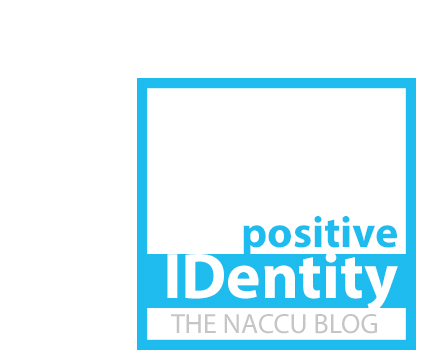Supervisor or Friend: Can You Be Both?

Positive IDentity Blog:
Supervisor or Friend: Can You Be Both?
Contributed by Lynn Ernsting, Seattle Pacific University
Working in Higher Education I have often observed a tendency for interactions between staff and students to quickly become friendly. College students want to connect, they want to share, and they often find staff or faculty to be a safe space for support as they progress through some of the most significant formational stages of their lives. Many are working their first “real” job and don’t have much context for what is generally accepted in the professional world as appropriate to share with a supervisor and what might be better left to their peers. Working at Seattle Pacific University (a faith-based institution) where many faculty, staff, and students share an additional reason for being part of this particular community, I see this happening among staff as well. Friendliness is commonplace, caring for one another beyond the work we do for the institution is not unusual, and it quickly leads to sharing personal life while living out professional life. Don’t get me wrong – I love this. It’s one of the reasons I love working at my institution. Since coming on staff at SPU I’ve gotten married, had two children, moved twice, and experienced significant loss. As a community we have experienced great tragedy. The colleagues I have on campus have often been the ones to be present and supportive through these major life milestones but as I continue to progress in my professional career, I have been asking myself the question - can I effectively be both supervisor and friend?
There are a few truths that need to be acknowledged at the start before exploring answers to my question. First, surely not everyone, whether student or staff, wants to be friends with their supervisor. And of course, we all know that work relationships should never go beyond friendship, and to take it one step further it may be that I need to define further what “friendship” means. For myself, the goal is to be able to support my staff holistically as I understand that life impacts work and vice versa. Having enough of a relationship with someone to be able to do this for them is truly my purpose here. So, I took to the internet.
 As part of their Lessons Learned series, FastCompany published an article by John Ramtpon titled “How To Be A Boss And A Friend” with a tagline “Bosses aren’t holed up in corner offices anymore. So why not build real bonds with your team?”. As I seek an answer to my question of whether one can effectively be both friend and supervisor at the same time, this article caught my attention quickly. The author quotes Gallup’s State of the American Workplace poll which showed “friendships at work can increase employee satisfaction by up to 50%” and that Globoforce reports “60% of employees who have at least six friends at work admit to loving their company.” Who doesn’t want their employees to have increased job satisfaction and love the organization? I sure do, but the question remains – can the boss be the one providing the friendship and still be an effective supervisor? Rampton offers the notion that office culture and the success of a team is the responsibility of managers and encourages one way to help a team succeed is to build friendships. The article goes on to outline how to do so successfully. This includes “treat everyone as a teammate”, “be honest and direct”, “make sure all voices are heard”, and “hang out, but not on social media”.
As part of their Lessons Learned series, FastCompany published an article by John Ramtpon titled “How To Be A Boss And A Friend” with a tagline “Bosses aren’t holed up in corner offices anymore. So why not build real bonds with your team?”. As I seek an answer to my question of whether one can effectively be both friend and supervisor at the same time, this article caught my attention quickly. The author quotes Gallup’s State of the American Workplace poll which showed “friendships at work can increase employee satisfaction by up to 50%” and that Globoforce reports “60% of employees who have at least six friends at work admit to loving their company.” Who doesn’t want their employees to have increased job satisfaction and love the organization? I sure do, but the question remains – can the boss be the one providing the friendship and still be an effective supervisor? Rampton offers the notion that office culture and the success of a team is the responsibility of managers and encourages one way to help a team succeed is to build friendships. The article goes on to outline how to do so successfully. This includes “treat everyone as a teammate”, “be honest and direct”, “make sure all voices are heard”, and “hang out, but not on social media”.
I agree that office culture starts with leaders, and I accept the point that positive office culture can come through building friendships, but seeking another perspective I found an article from CEO Today titled “Can You Be A Friend And Still Be The Boss?”. (Clearly I’m not the only one wrestling with this question!) The article discusses the benefits and challenges of friendships at work then goes on to outline “10 ways to Be the Boss and a Friend”. Some of the points that stood out to me were those about being intentional and mindful about your interactions and words, understanding that not everyone will want to be friends, and ensuring fairness and equity among the team. A few of the other points mention acknowledging the “power shift” through conversation and purposefully recruiting people that will be a good fit for the office culture you seek. I resonate with many of these items but recognize that I need to boil it down to the approach that will work best for me. After all, one size doesn’t actually fit all in most cases.
So, as I embark on a journey to invest personally in those I serve alongside, here is the approach I think I’ll try. I am going to do so from a place of genuine interest in knowing and supporting those I work with, offering opportunities to share with me in small ways as they are comfortable. I will do so with a focus on equity among all teammates (those who want to be friends and those who don’t) to ensure I don’t treat my team members differently depending on their level of engagement in this space. I will seek to clearly communicate the same level of expectations to all. Where I am able, I will support those on my team as they experience the full spectrum of what life brings them. And finally, I will seek to provide regular opportunities for all to speak with, hear from, and spend time with the whole team.
Although I still don’t have an answer to my question, and my approach may have holes, check back with me in a few months and we’ll see how this tactic works out!
Links:
https://www.ceotodaymagazine.com/2019/02/can-you-be-a-friend-and-still-be-the-boss/
https://www.fastcompany.com/3050878/how-to-make-friends-with-your-employees-while-being-their-boss
Photo credit: Brooke Cagle
